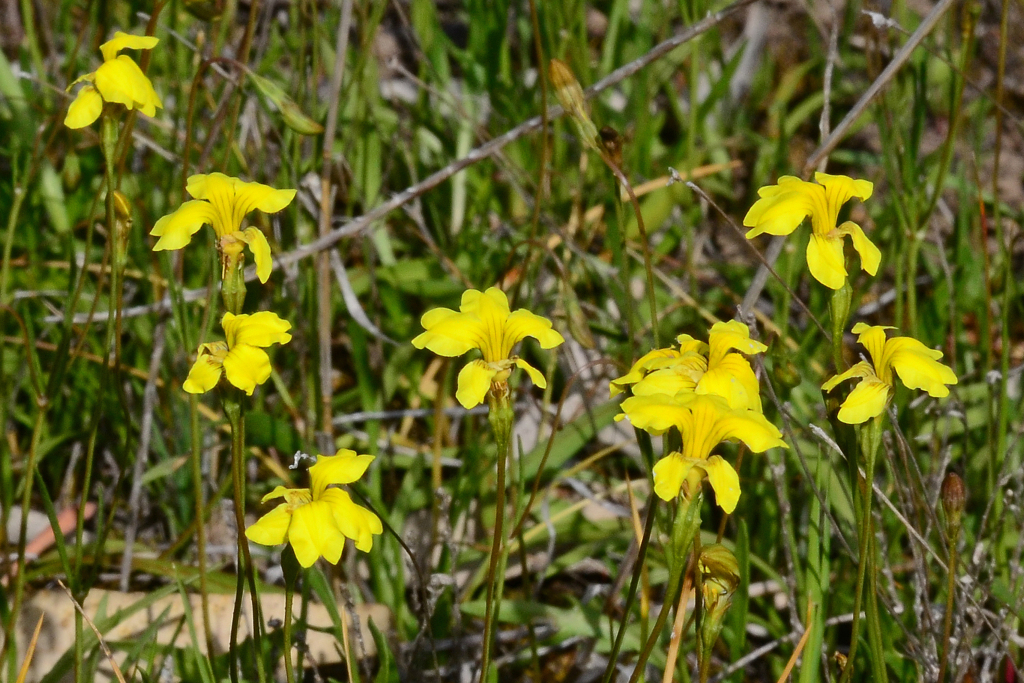Goodenia pinnatifida
Schltdl. Cut-leaf GoodeniaDecumbent to ascending perennial (rarely annual) to 40 cm high; stems glabrous or with short antrorse or crisped hairs. Leaves glabrous to sparsely pubescent; basal leaves petiolate, ascending, rosetted, oblong to oblanceolate, 2–8 cm long, 3–20 mm wide, obtuse, pinnatisect with oblong or linear lobes, or margins toothed; cauline leaves sessile, smaller, few (or sometimes lacking), entire to pinnatisect. Inflorescences terminal racemes to 8 cm long, or often subumbels; pedicels articulate, 2–14 cm long; bracteoles absent. Sepals lanceolate, 3–6 mm long; corolla 8–19 mm long, more or less glabrous outside, densely hairy inside, yellow, abaxial lobes 3.5–10 mm long, wings 2–4 mm wide; indusium depressed-ovate, entire; ovules 20–35. Fruit subglobose, c. 8 mm long, valves entire; seeds elliptic to orbicular, c. 5 mm long, almost smooth, glossy, black, wing c. 0.5 mm wide. Flowers mainly Sep.–Dec.
LoM, MuM, Wim, VVP, VRiv, MSB, RobP, MuF, GipP, OtP, Gold, CVU, GGr, DunT, NIS, EGU, HSF, HNF, VAlp. All states. Widespread in grasslands, grassy woodlands and open-forests through much of Victoria, but absent from higher ranges.
Currently included in this species is a form probably warranting formal recognition, differing from typical G. pinnatifida in its annual habit and smaller flowers. It is locally common in grassland and open woodlands of the Kerang-Mitiamo area and parts of the mallee (e.g. Wyperfeld National Park). It probably equates to G. pinnatifida var. minor F.Muell. (type from Western Australia), but this name is currently treated as a synonym of the species.
Jeanes, J.A. (1999). Goodeniaceae. In: Walsh, N.G.; Entwisle, T.J., Flora of Victoria Vol. 4, Cornaceae to Asteraceae, pp. 589–615. Inkata Press, Melbourne.
 Spinning
Spinning



